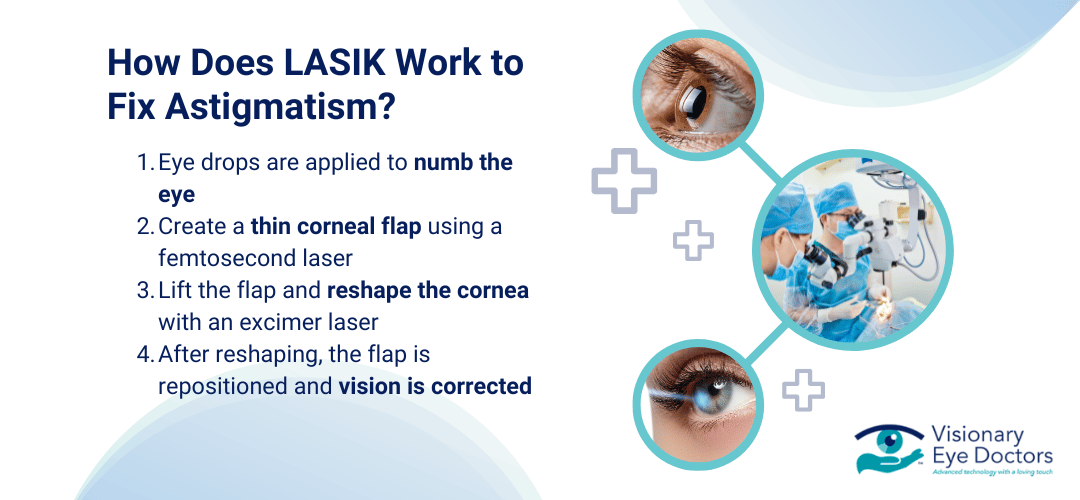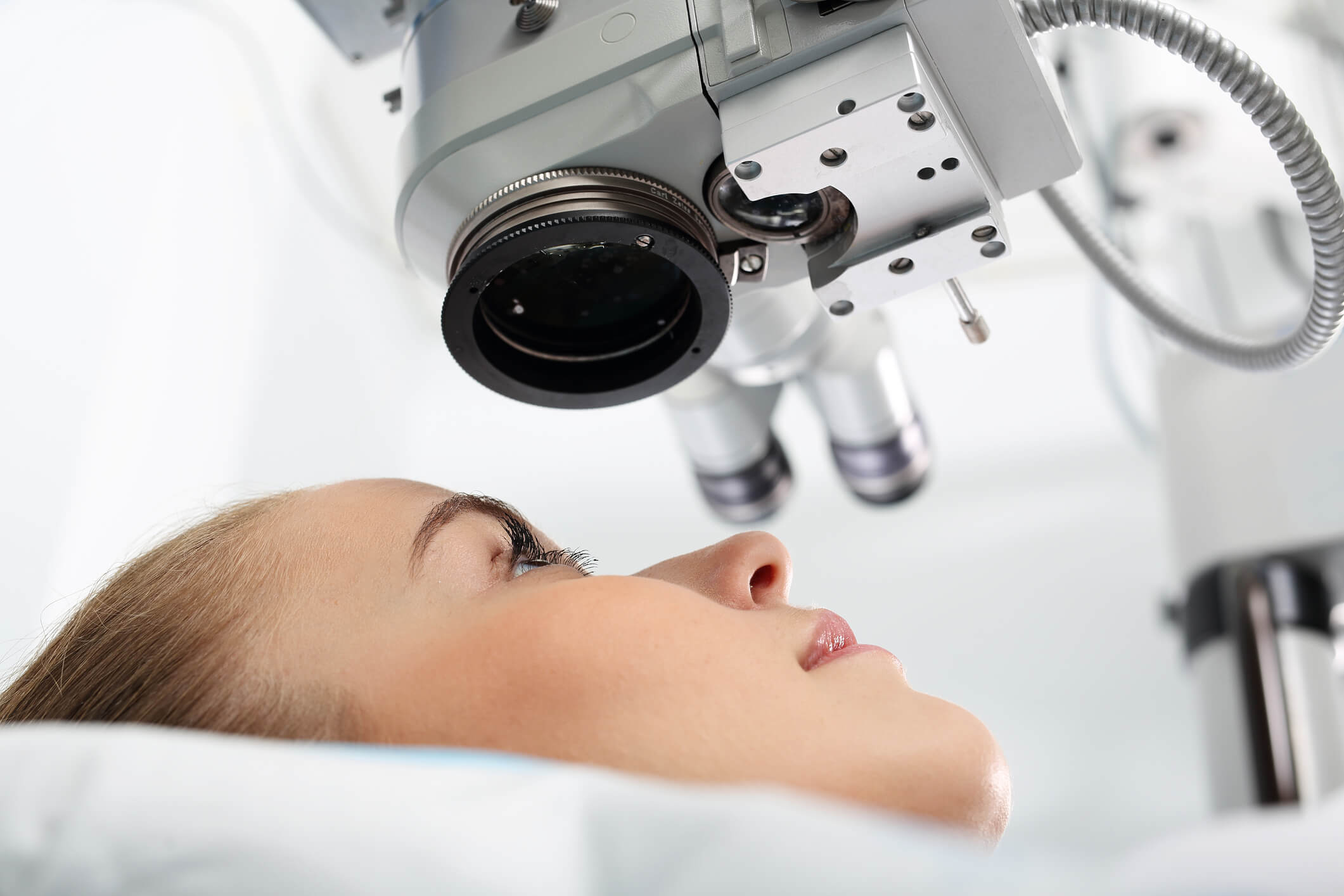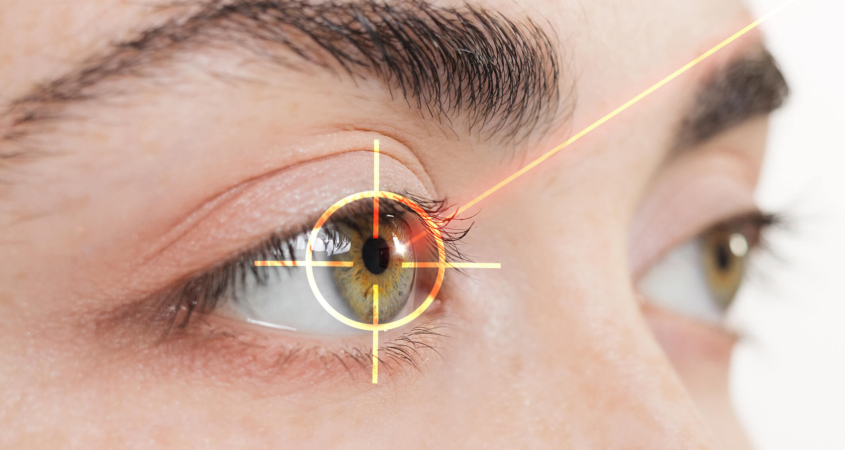Can LASIK Fix Astigmatism? Everything You Need to Know
Can LASIK fix astigmatism? The answer is yes. LASIK is a popular and effective refractive surgery that corrects common vision problems like nearsightedness, farsightedness, and astigmatism.
Understanding the Basics of LASIK
LASIK (Laser-Assisted in Situ Keratomileusis) is a widely performed refractive surgery that improves vision and eye health. Developed in the 1990s, LASIK has advanced significantly, offering patients a safe and effective way to reduce or eliminate their dependence on corrective lenses like glasses and contacts.

How Does LASIK Work?
The LASIK surgical procedure is quick and minimally invasive, typically taking less than 15 minutes for each eye:
- Creating the Corneal Flap: Anesthetic eye drops are applied to numb the eye. A femtosecond laser is then used to create a thin flap with precise dimensions.
- Reshaping the Cornea: The surgeon lifts the flap to access the underlying corneal tissue and uses an excimer laser to reshape it – correcting refractive errors.
- Repositioning the Flap: After reshaping, the flap is carefully repositioned, adhering naturally without the need for stitches.
Vision Problems Addressed by LASIK
LASIK is designed to treat the following eye conditions:
- Nearsightedness (Myopia): Improves distance vision by flattening the cornea.
- Farsightedness (Hyperopia): Enhances near and intermediate vision by steepening the cornea.
- Astigmatism: Corrects an irregularly shaped cornea by improving overall visual acuity.
By addressing these refractive errors, LASIK provides long-term vision correction, helping patients achieve clearer sight with minimal downtime.
Astigmatism Explained
Astigmatism is a common refractive error caused by an irregular shape of the cornea or lens. Instead of being perfectly round like a basketball, an eye with astigmatism has an uneven shape, more like a football, that causes blurred vision and distortion.
Types of Astigmatism
There are two main types of astigmatism, each affecting vision differently:
- Regular Astigmatism: The cornea curves more in one direction than the other, creating a consistent distortion that can typically be corrected with glasses, contact lenses, or LASIK surgery.
- Irregular Astigmatism: The corneal curvature is uneven or asymmetrical, often caused by injury, scarring, or conditions like keratoconus. This type may require specialized contact lenses or alternative treatments.
Ranging from mild to severe, astigmatism is measured in diopters:
- Slight: up to .75 diopters
- Mild: .75-2 diopters
- Moderate: 2-4 diopters
- Severe: 4 more or diopters
Traditional Vision Correction Procedures
Astigmatism is commonly corrected through:
- Eyeglasses: A simple and effective solution that compensates for corneal irregularities.
- Contact Lenses: Toric lenses are specially designed to correct astigmatism by aligning with the cornea’s unique shape.
- Refractive Surgery: A LASIK procedure reshapes the cornea to create a more uniform curve, improving light focus and reducing or eliminating the astigmatism.
By understanding astigmatism and its correction options, patients can make informed decisions about the best treatment to achieve clearer, sharper vision.
LASIK’s Role in Correcting Astigmatism
During LASIK laser eye surgery, a highly precise laser removes microscopic amounts of corneal tissue. This process enhances the way light is refracted onto the retina, reducing blurry vision. LASIK has proven to be an effective, long-term solution for astigmatism, providing many patients with sharper sight without the need for glasses or contacts.
The Technology Behind LASIK for Astigmatism Correction
LASIK relies on advanced technology to ensure precision and safety when treating astigmatism.
- Femtosecond Laser: This ultra-fast laser creates a thin, customized corneal flap with extreme accuracy. The flap gives the eye surgeon access to the underlying corneal tissue while maintaining the integrity of the eye’s surface – which helps to minimize post-surgical complications and ensure a smooth recovery.
- Excimer Laser: This specialized laser reshapes the cornea by removing microscopic layers of tissue. These lasers are computer-controlled and use a light beam to minimize risks of thermal damage to the tissue.
- Corneal Topography Mapping: Before LASIK, a detailed 3D image of the cornea is generated using corneal topography. These tools measure even the smallest imperfections in the cornea so the surgeon can precisely correct the astigmatism.
These technological advancements allow for highly individualized treatment, ensuring that each patient receives optimal results tailored to their unique corneal structure.
Comparing LASIK to Other Refractive Surgeries
For patients with astigmatism, LASIK is often the preferred choice, but other procedures may be considered based on individual eye health:
- PRK (Photorefractive Keratectomy): Similar to LASIK but without a corneal flap; best for those with thinner corneas because it preserves more corneal tissue. However, PRK has a longer recovery period and can cause temporary discomfort.
- ICL (Implantable Contact Lens): An alternative for patients who are not LASIK candidates and don’t want to permanently alter their cornea. Involves the insertion of an implantable lens inside the eye to correct vision.
Who is a Good Candidate for LASIK?
For patients with astigmatism, eligibility for LASIK depends on several factors, including:
-
- Stable vision prescription for at least a year
- At least 21 years old
- Sufficient corneal thickness to allow for safe reshaping
- Overall eye health, free from conditions like keratoconus or severe dry eye
With its precision and long-lasting results, LASIK remains one of the most effective options for astigmatism correction.

Why Trust Visionary Eye Doctors for LASIK Eye Surgery
Choosing where to have LASIK is just as important as deciding to have the procedure itself. At Visionary Eye Doctors, we combine advanced technology with expert surgical care to provide a seamless, patient-focused experience.
Our team takes a personalized approach to astigmatism treatment, ensuring each patient receives a thorough evaluation to determine the best course of action. Many of our patients with astigmatism have achieved life-changing results through LASIK:
- Sharper, clear vision with reduced distortion and blurring
- Greater convenience – no more hassle with glasses or contacts
- Improved lifestyle – enhanced performance in sports, travel, and daily activities
Take the Next Step Toward Clearer Vision
If you’re considering LASIK for astigmatism, the best way to determine if you’re a candidate is through a comprehensive consultation.
Schedule an appointment with Visionary Eye Doctors to explore your options and take the first step in improving your vision and eye health!
Resources:
https://www.mayoclinic.org/tests-procedures/lasik-eye-surgery/about/pac-20384774
https://www.healthline.com/health/eye-health/femto-lasik
https://my.clevelandclinic.org/health/diagnostics/24819-corneal-topography



